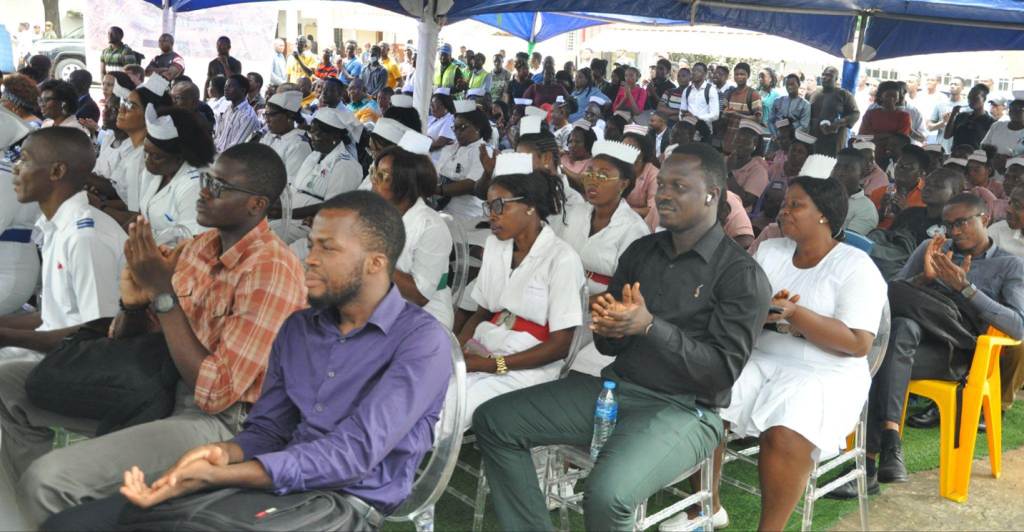Analysis
Sierra Leone’s health sector is witnessing a true revolution under the visionary leadership of the Minister of Health, Dr. Austin Demby. In just under three years, over 40 health facilities across the country have been powered with uninterrupted renewable energy bringing hope to the people and making good on the Minister’s promise of going green for health. This is more than just electricity access, it is about dignity, improved service delivery and ultimately, it is about saving lives!
FREETOWN, Sierra Leone 12th June, 2025.
The Vice President of the Republic of Sierra Leone, Dr. Mohamed Juldeh Jalloh, has officially commissioned renewable solar power systems installed at Connaught, Sierra Leone’s biggest referral hospital. This landmark event symbolizes the addition of 10 government hospitals to have benefited from the ongoing investment in healthcare. As part of phase three of the country’s Health Electrification Project, the commissiong is part of a broader effort that has now seen the successful completion of over 40 health facilities with uninterrupted power supply. This means an additional 2.3 MWp (Megawatt-peak) of completed solar energy installed in the country’s health sector. The Vice President shared his excitement about the launch, emphasizing the significance of this massive investment.

“We have laid the foundation for a reliable and sustainable energy access in our hospitals. This project is part of the broader strategy of His Excellency President Julius Maada Bio’s government to modernize our healthcare infrastructure, not just in the capital but across the country.” He went on;
“as we celebrate this major step forward, let us also reflect on our shared responsibility. Infrastructure alone cannot drive change, it must be matched by commitment, discipline, and accountability in service delivery.”
Access to a reliable energy supply is a fundamental human right, not a privilege. It does not only allow for better quality of life, but it allows for healthcare facilities to function optimally. With uninterrupted electricity supply, health workers enjoy the latitude of delivering a wide range of medical services, including delivering babies at night, performing complex and safer surgical procedures, cold-chain preservation of vaccines and functional oxygen concentrators in intensive care units (ICUs), without having to worry about power outages. That is why the Minister of Health, Dr. Austin Demby, sees powering the health sector not as an option but as a major prerequisite to improving quality service delivery.

“This milestone is not just about improvement in infrastructure, it is about impact. It is about saving lives. It is about ensuring that a mother in Kambia, a child in Kailahun, or a critical patient at Connaught can receive life-saving care without interruption.”
These installations are the result of strong multi-stakeholder collaborations led by the Ministry of Health and made possible through the steadfast partnership of the UK Government and the FCDO. With implementation support from SEforALL, Em-One, and project oversight from TetraTech and CEMMATS, covering 17 hospitals and 25 primary healthcare centers.
Phase 1 of the project saw the successful electrification of six prominent government hospitals including Masanga Hospital, Princess Christian Maternity and the Old During Children’s Hospitals, with solar PV and battery systems. Solar PV systems in 25 primary healthcare facilities under Phase 2 were also commissioned in November 2024, followed by the electrification of Kailahun Hospital in the same phase.

This Healthcare Electrification Project has strategically positioned Sierra Leone to significantly reduce its greenhouse gas emissions by dislodging the country’s over reliance on diesel-powered generators to run healthcare facilities. With clean energy access, powered by sunlight, the health sector is now better prepared to tackle extreme weather events due to climate change as well as potential public health emergencies. Minister Demby is clear about why this facility must be protected at all cost.
“Electricity is not just a utility; it is a foundation for effective healthcare delivery. With power, we empower our doctors and nurses and the healthcare system to function optimally. With light, we fight darkness by ushering in a future where quality healthcare is no longer a privilege for the few but a right for all.”

It is now expected that community members should play active role in protecting and preserving these equipment to ensure that the upgrades actually translate into better health outcomes for everyone.

